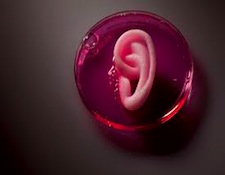It’s the time of year for saving money!

In writing another article recently, I was reminded of the old days of Hi-Fi, when equipment reviews in High Fidelity Magazine, and HiFi and Music Review (later known as Stereo Review), our hobby’s first publications, were nothing at all like what we’re accustomed to today.
In those golden days of yesteryear (High Fidelity and HiFi and Music Review were first published in 1951 and 1958, respectively), “reviewers” wrote about equipment based on its measured performance, price, features, and “fit and finish”, without ever once actually listening to it or saying a word about how it sounds. Even Julian Hirsch’s famous Hirsch-Houck Laboratories, the test facility he co-founded with Gladden Houck of The Audio League Report, and which was the source, over time, of more than four THOUSAND equipment reviews for several different publications, was really just a laboratory, and nothing at all like what we would consider, today, to be a “listening room.”
Apparently, in those days, “listening” was either considered irrelevant or somehow embarrassing: Just as readers of Playboy, another publication founded (1953) around that same time, were quick to tell others that they bought it “…for its articles and cartoons”, and certainly never for the more sensory delights it had to offer, maybe the people of those more strait-laced years of below-the-knee skirts and tight, but buttoned-to-the-neck cashmere sweaters felt more comfortable buying their HiFi equipment on “scientific evidence” instead of for such a sensory, or even (gasp) “hedonistic” reason as that it sounded good.
Or maybe it was simply a newcomer’s lack of confidence: HiFi Crazies of today all know the non-audiophiles’ standard response to whatever (probably expensive) new audio thingy may be mentioned to them: “Oh, that’s fine for you, but I’m sure that I could never hear the difference.” Maybe numbers, graphs, and other “scientific evidence” were what they needed to justify their commitment to something more than just an ordinary radio or record-player.

In any case, when speakers were the subject of a review, the information given was about decibels and frequency response; when the subject was electronics, there would certainly be some reference to frequency response and distortion, but because electronics were seen as being essentially “perfect” – at least for all practical purposes – the body of a review of a new vacuum tube receiver or integrated amplifier (the “standard” products at the time) was more likely to be about features and build quality than specifications. (Later, in the ‘Sixties, when solid-state came around, along with massive quantities of negative feedback, and distortion figures in the ten- or even hundred-thousandths of one percent became ordinary, specifications came back to electronics reviews, but only to re-confirm the perfection of the products and the contention that they couldn’t possibly have any effect on the sound of a system.) Similarly, and perhaps PARTICULARLY when the review was of a new turntable or record changer, it could ONLY be about speed accuracy, “wow and flutter”, and “rumble”, with no reference whatsoever to what it sounded like, for the simple reason that, in those days, nobody believed that a turntable OR a tonearm OR a platter mat or the material of the platter, itself, OR anything at all about record-playing other than just the cartridge and the record COULD “sound”.
Those early days passed in the 1970s, with the advent of “subjective” equipment reviewing, and we got a whole new approach to the reviewing process: Instead of measuring without listening, we got listening without measuring, and, although that brought certain benefits, it was not without problems of its own.
For one thing, we got words like “musical” and “analytical” as parts of a whole new vocabulary of reviewing terms that, even to this day, seems to have no absolute meaning. For example, a reviewer who likes his sound warm and gooey might very well describe an absolutely (Yeah, go ahead and measure it!) neutral and uncolored product as “analytical” – meaning (as near as I can tell) “bright and lean”, whereas another reviewer (me, for example) might describe that same product as “neutral and uncolored” while considering the thing that the other guy likes as “warm and gooey”, even though the other guy would describe his own preferred product as just being “musical”.
Descriptions of tonality are always difficult, but descriptions of other things ― transient attack and decay, for example, or detail, or the rendering of spatial effects – may be easier, or at least seem easier to communicate. Even so, a great many things about audio still remain very highly subject to a listener or reviewer’s subjective preference: Dahlquist DQ 10s and the Tannoy or Altec coaxes (to use “classic” examples that will not tromp on any current toes) were all VERY popular in their heyday, but had utterly different spatial presentations and overall sound qualities; so, which was ― or was ANY of them ― “right”, even though the reviewers heaped them all with praise?

The fact of it is that different people (even different reviewers) like different things, and, to make things even more difficult, all listen to different music on different total systems, in different rooms, under different circumstances and in different states-of-mind, and the reviews we read have gone from largely meaningless specifications to largely meaningless subjective evaluations by people we may or may not agree with or who might simply be wrong.
There really WAS a reviewer for one of the popular HiFi magazines who was profoundly deaf in one ear, but who still saw fit to comment on imaging and soundstaging. Could his opinion really have been of value? Or could it be that…
The Emperor has new ears.





